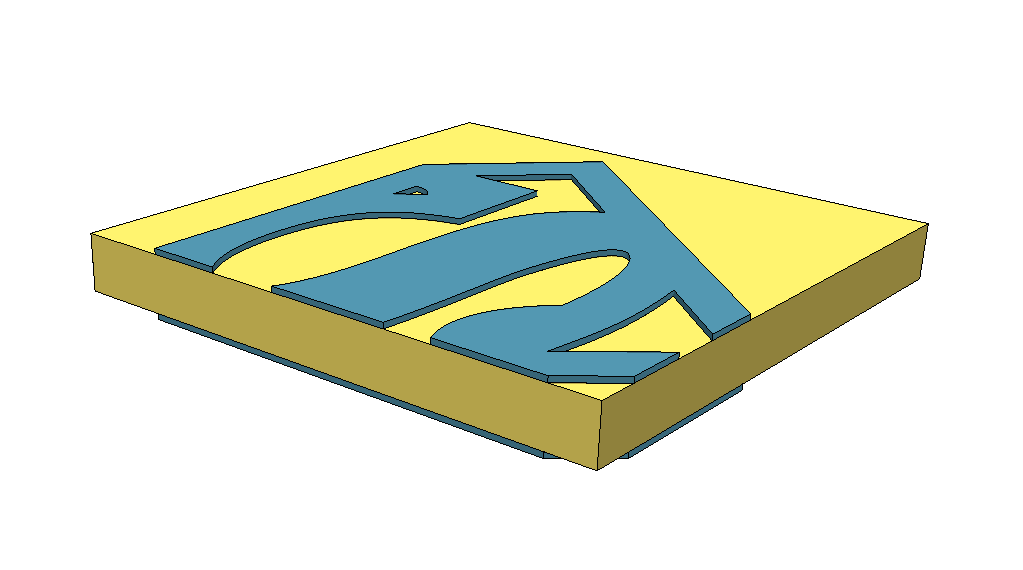
Useful links
Useful links
Useful links
Falcon build tools and material
COMING SOON!
Falcon build tools and material
COMING SOON!
Falcon painting
COMING SOON!
This is an animation, done in Fusion 360, to test the foot of the ramp, which flips down and up when the ramp opens and closes respectively.
This could be a version that works but difficult to motorize at the scale of the Deagostini model. I am not even sure it was motorized in the movie sets.
Etching basics
1) What is the photo etching process?
The process of photo etching or chemical photo-cutting makes it possible to dissolve with an acid the unprotected parts of a metal sheet so as to create a predefined part. This method makes it possible to produce printed circuits boards or pieces of metal used in model making.
2) Stages of the photo etching process
A) Creation of artwork (phototool)
The creation of opaque masks (or phototool) is the initial step of the process. It is a transparent sheet on which is printed a negative or positive opaque image of the parts to be manufactured.

B) Preparing the metal sheet
The metal sheet must first be cleaned to remove any grease and must be finely sanded.

C) Applying the photo resist
The metal sheet is the covered with photosensitive sheet or coating.

D) UV exposure
The image of the part to be manufactured is then transferred by insolation by means of UV lamps through opaque masks (phototool).

E) Developing
The development removes the exposed photosensitive sheet (UV positive film) exposing the metal. The photosensitive sheet, protected by the opaque parts of the template, remains in place, constituting a protection of the metal sheet. It's the opposite with a negative film.


F) Etching
Chemical etching is performed on the exposed parts to remove the material. It remains an exact reproduction of the artwork.
G) Stripping and cleaning
The protective sheet is then dissolved by a stripping operation to obtain the finished part.

3) Equipment and consumables
The best is to work in a well-ventilated room equipped with a large ceramic sink and a water inlet.
Equipments
-
A good quality printer
-
A laminator
-
An insolation bench or a UV light source (actinic ultraviolet)
-
2 glass plates to press the opaque masks and photosensitive plate during UV exposure
-
An etching tank or an acid-proof container (glass or plastic)
-
Plastic containers for cleaning, developing and stripping
-
Plastic bottles for storage of developer and acid
-
Rubber gloves
-
Protective glasses
-
Old clothes or lab coat
-
Fully plastic clothes pegs
Consumables:
-
Transparent sheets (video projector type) to print
-
Metal plates to etch (e.g. brass sheets)
-
Sanding and degreasing/cleaning product
-
Photosensitive films (positive or negative)
-
Developers suitable for photosensitive products
-
sodium carbonate or washing soda
-
sodium hydroxide or caustic soda
-
-
Acides for etching
-
ferric chloride
-
sodium persulfate
-
ammonium persulfate
-
potassium persulfate
-
-
Products for stripping
-
acetone
-
4) Security and environmental rules
The chemicals used for photo etching are hazardous chemicals. It is therefore essential to read the labels of the products as safety measures must be taken. The developers are usually based on aggressive caustic soda for the skin and eyes. The etching bath is acid therefore very corrosive. So, safety steps should be taken in the form of protective clothing, gloves, goggles, etc. Actinic ultraviolet light is harmful. It is therefore imperative to avoid looking at it. In the same way, it is better to realize the insolation in a closed box. Do not throw chemicals into the sink as they are polluting and aggressive to the pipes. They must be entrusted to a specialized dump area.
By continuing to read this article you must accept that YOU are responsible for your own safety and should read all labels and safety data sheets available.